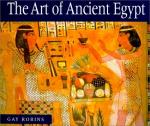|
This section contains 1,735 words (approx. 6 pages at 300 words per page) |

|
Formal Titulary.
The king acquired and maintained his divinity through a series of rituals. The first such ritual the king participated in was his coronation, called in Egyptian khai, which means "to arise" and was also used to describe the sun's rising. At this time, the five elements of the king's formal titulary were announced: a Horus name, representing the king as the earthly embodiment of the sky-god Horus; a "Two Ladies" name (the two ladies being the goddesses Nekhbet and Wadjit, the two protective goddesses of Upper and Lower Egypt); the Golden Horus (or simply the Gold) name, the exact significance of which is uncertain; his throne name, assumed at accession, which was preceded by the title "King of Upper and Lower Egypt"; and the birth name which, beginning in the Fourth Dynasty (2625–2500 B.C.E.), was compounded with the title "son of Re." It...
|
This section contains 1,735 words (approx. 6 pages at 300 words per page) |

|




